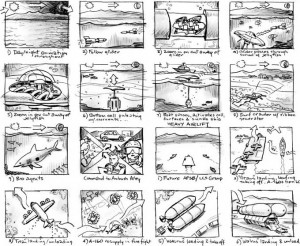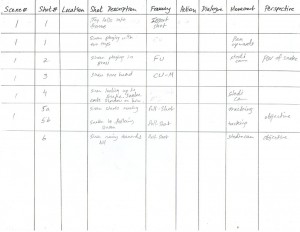Animatic
Noun. a preliminary version of a movie, live-action scene or animation, produced by shooting successive sections of a storyboard and adding a soundtrack.
Source: wiktionary
- Why animatics developed
- To show complex movement and sfx
- Test viability (budget and space/time constraints)
- Gives distance to the filmmakers involved
- uses of animatics
- Timing (rhythm) – things that are hard to time
- Special effects/ transitions
- Audio (choosing music/ voice)
- Camera movements
- Distance
- Who uses animatics?
- Director
- Actors especially working with animated characters or objects
- Sound booth – VO actors
- Types of animatics.
- Hand-drawn animatics (hand drawn storyboards) https://www.youtube.com/watch?v=F8Iys-KXfFc
- Pencil tests (motion of characters or objects) https://www.youtube.com/watch?v=xMLMQtFVQuU
- Motion preview (inspiration media that deals with motion) https://www.youtube.com/watch?v=PLxI6kW7bFU
Videomatic
Noun. A rough videotaped version of a scene that uses actors or production staff in blocking the action, actor placement, timing and camera angles.
Source: Exploring Storyboarding, Wendy Tumminello (chapter 12)
Bluescreen/ greenscreen – an area of the picture with a designated color to “key” out. There are two types of keying : chroma and luma.
Exploring Adobe Premiere.
- How to import jpgs
- How to create pans and zooms
- How to make and import temporary/ rough VO
3D animatics
- Low cost 3D model (proxy model) instead of stand-ins allow filmmakers to experiment with camera positions.
Timing
- Length (rt= running time)
- mood/pacing
- rhythm/ changes in pace
Frame Rates
- Film vs. TV
- NTSC vs. PAL
- Calculating frames for animation
- Fast and slow motion
Timing for expressive results
- Consider the following rules:
- Sad shots have soft and slow motions
- Energized sequences have fast action/ movements and more cuts
- Anxious shots have fast motions but with long pauses






